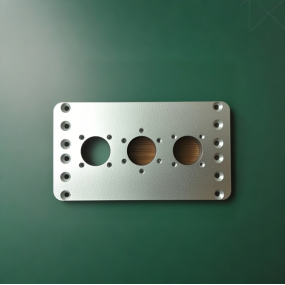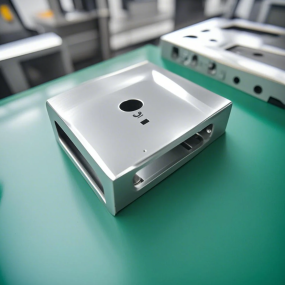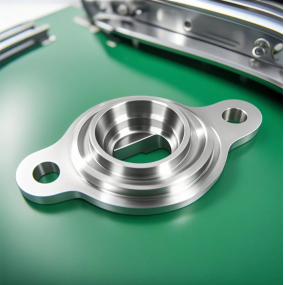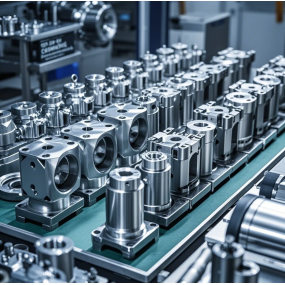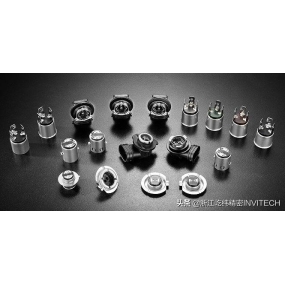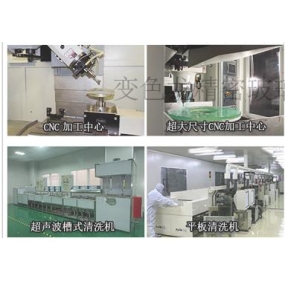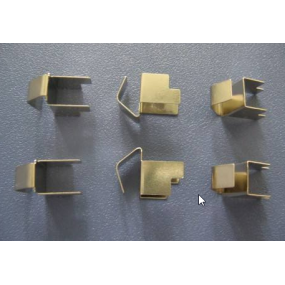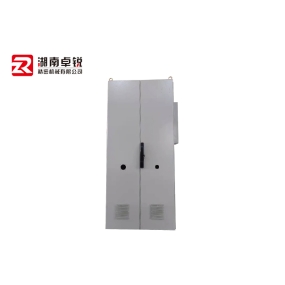Sheet Metal Stamping process is suitable for punching, blanking and trimming of cabinet structures such as silent cabinets and power distribution cabinets. Punching machine: Punching machines of different tonnages should be selected according to the punching force of the workpiece, and the molds used need to be inspected before they can be used. Strictly implement the first piece inspection, intermediate spot inspection, and tail part review; the workpiece processing size should be checked according to the drawings or process documents; the punching edge should not be stretched or bent, and the burr height should not exceed 10% - 15% of the material thickness; the safety and reliability of the mechanical and electrical properties should be checked by the test run; the parts to be processed should be inspected by the previous process before processing; the technical requirements should be clarified before processing, and the incoming materials should be checked for errors; understand that the corresponding mold is selected according to the processing requirements; first punch the punch slider to the top dead center, and the upper module should be loaded into the slider mold handle groove, and then straightened and leveled; tighten the screws and top wires, and there should be no gap between the upper module and the bottom surface of the slider; wipe the bed surface clean to remove oil and iron filings. Place the lower module on the countertop of the punching machine; jog the driving or hand wheel to sew the slider to the lower dead point into the lower die, adjust the height of the connecting rod, and make the die stroke appropriate; adjust the gap of the stamping die to ensure that the surrounding clearance is consistent; press and flatten the lower module pressure plate, the pad iron and the bottom die plate should be equal in height, and the fixing point should be symmetrical; lock the connecting rod to check whether the die is loose; test the punching material to check whether the section is neat, uniform, and consistent; adjust the plate according to the size requirements, and set the vertical reference (front and rear) and horizontal reference (left and right); understand that in the processing of the material, it should be close to the plate, and it should be flat on the bottom die; pay attention to the processing direction when punching and masking to avoid wrong punching; The finished parts should be arranged neatly and labeled.
Hello! Welcome to EMAR's website!
 English
English » »
» »
 Spanish
Spanish Arabic
Arabic French
French Portuguese
Portuguese Belarusian
Belarusian Japanese
Japanese Russian
Russian Malay
Malay Icelandic
Icelandic Bulgarian
Bulgarian Azerbaijani
Azerbaijani Estonian
Estonian Irish
Irish Polish
Polish Persian
Persian Boolean
Boolean Danish
Danish German
German Filipino
Filipino Finnish
Finnish Korean
Korean Dutch
Dutch Galician
Galician Catalan
Catalan Czech
Czech Croatian
Croatian Latin
Latin Latvian
Latvian Romanian
Romanian Maltese
Maltese Macedonian
Macedonian Norwegian
Norwegian Swedish
Swedish Serbian
Serbian Slovak
Slovak Slovenian
Slovenian Swahili
Swahili Thai
Thai Turkish
Turkish Welsh
Welsh Urdu
Urdu Ukrainian
Ukrainian Greek
Greek Hungarian
Hungarian Italian
Italian Yiddish
Yiddish Indonesian
Indonesian Vietnamese
Vietnamese Haitian Creole
Haitian Creole Spanish Basque
Spanish Basque


